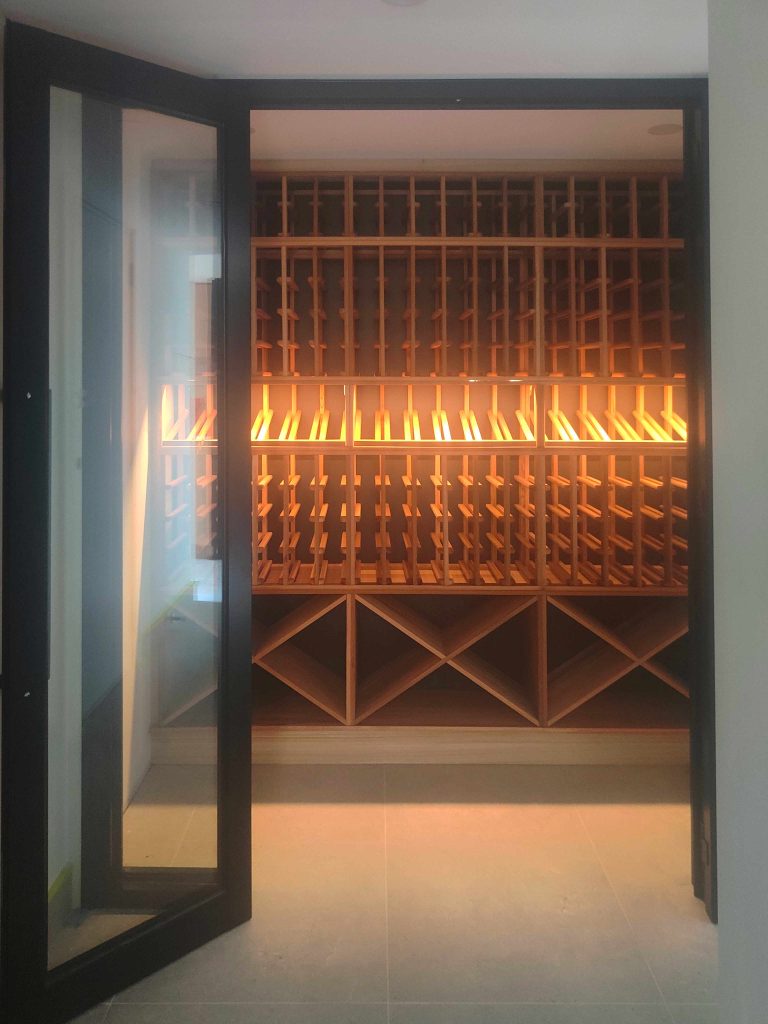Can you keep your wine in a Passive Wine Cellar?
In the world of wine aficionados and enthusiasts, the term “cellar” often conjures images of temperature-controlled rooms lined with racks of carefully curated bottles, meticulously organized and ready for enjoyment. However, there exists another type of cellar, one that operates on a more natural and passive principle – the passive cellar. In this post, we delve into what exactly a passive cellar is, its benefits, and how it differs from its more high-tech counterpart.
Understanding the Passive Cellar:
At its core, a passive cellar is a storage space designed to maintain ideal conditions for aging wine without the use of mechanical refrigeration or humidification systems. Instead, it relies on natural environmental factors such as insulation, ventilation, and thermal mass to regulate temperature and humidity levels.
Key Components:
- Location: Passive cellars are often situated underground or within a structure that provides insulation from external temperature fluctuations. The earth itself acts as a natural insulator, helping to stabilize temperatures year-round.
- Insulation: Adequate insulation is crucial for maintaining a consistent temperature inside the cellar. Materials such as thick walls, earth berms, or foam insulation help to prevent heat exchange with the surrounding environment.
- Ventilation: Proper ventilation ensures air circulation within the cellar, preventing the build up of excess humidity and stagnant air. Ventilation openings or vents allow for the exchange of air with the outside environment, promoting fresh airflow.
- Thermal Mass: Materials with high thermal mass, such as concrete, stone, or earthen floors, absorb and release heat slowly, helping to regulate temperature fluctuations. This thermal inertia helps to buffer the cellar against external temperature changes.
Benefits of a Passive Cellar:
- Energy Efficiency: Unlike temperature-controlled cellars that rely on mechanical systems, passive cellars require minimal energy input, making them more environmentally friendly and cost-effective to operate.
- Natural Aging Process: By harnessing natural environmental conditions, passive cellars allow wines to age gracefully, without the influence of artificial temperature fluctuations. This natural aging process is often preferred by connoisseurs seeking authentic expression of terroir.
- Low Maintenance: With fewer mechanical components, passive cellars are relatively low maintenance, requiring only occasional monitoring and adjustments to ensure optimal conditions.
- Aesthetic Appeal: Many passive cellars boast rustic charm and architectural character, adding to the overall ambiance and appeal of wine storage spaces. Cellar Smart offers a range of Wine Racking to store your wine within you passive cellar.
Differences from Temperature-Controlled Cellars:
While both types of cellars serve the purpose of wine storage, there are notable differences between passive and temperature-controlled cellars:
- Technology: Temperature-controlled cellars rely on mechanical refrigeration and humidity control systems to maintain precise conditions, whereas passive cellars utilize natural environmental factors.
- Cost: The initial cost of installing a temperature-controlled cellar can be significantly higher due to the expense of equipment and installation, whereas passive cellars are often more cost-effective to construct.
- Flexibility: Passive cellars may have slightly less precise temperature and humidity control compared to their mechanical counterparts, but they offer a more natural and traditional approach to wine aging.
In Conclusion:
A passive cellar represents a return to simplicity and a celebration of the natural elements in wine storage. By harnessing the inherent qualities of the environment, these cellars offer an alternative approach to preserving and aging wines, one that emphasizes sustainability, authenticity, and minimal intervention. Whether tucked away underground or integrated into a residential space, a passive cellar invites wine enthusiasts to reconnect with the essence of winemaking and the timeless art of cellaring.


